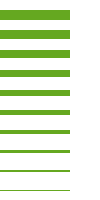https://doi.io-warnemuende.de/10.12754/data-2025-0002
doi:10.12754/data-2025-0002
© Author(s) 2025. This work is distributed
under "Creative Commons Attribution 4.0 International"
Unravelling protist trophic complexity and prey-size dynamics in Central Baltic spring blooms (Version 1.0)
Abstract. The trophic mode is one of the most important functional traits of organisms, determining their position in the food web and their role in the ecosystem. Under the classical concept, phytoplankton was considered to consist exclusively of phototrophic organisms and microzooplankton to consist exclusively of heterotrophic organisms. Contrastingly, communities considered as “phytoplankton” have been shown to include a variety of protist species combining both phototrophy and phagotrophy (mixotrophs) or even being non-photosynthetic. In extension, trophic diversity and relationships among plankton are expected to be more extensive and complex than previously thought.
Here we categorized the aquatic protist community present during spring bloom period in Bornholm Basin, central Baltic Sea, by trophic modes, and then analysed the temporal succession in community composition in terms of taxonomic groups and feeding mode, and its correlation with environmental factors and available prey-size. As one of the first studies, we deliver insights into the ciliate community composition of this area, and reveal more complex structural and functional dynamics within the protist community than previously recognized. Notably, the heterotrophic community in spring was characterized by a high diversity of species and groups besides ciliates.
The ciliate community showed clear seasonal succession in body size-classes, switching from the smallest size-fraction (10-20µm) in winter to medium and large-sized species with start of the spring period. Ciliates species composition showed further strong correlation to sea surface temperature, shifting from a cold-associated to a warm-associated community over the course of the spring season. Our results further lead to the suggestion that in communities including a larger mixotrophic component, size trait-based relations between phototrophic prey-size and dominance pattern of heterotrophic ciliates or dinoflagellates are less clear due to similar prey-size preferences among heterotrophic and mixotrophic species.
Our results emphasize the importance of accounting for the trophic modes of species to enhance the understanding of trophic relations and dynamics within bloom events.
Scientific purpose: The aim of the study was to analyse the protist community composition and its seasonal succession during spring bloom according to species trophic mode. Further we provide here one of the first data sets on ciliate community composition and biomass succession of Bornholm Basin.
Citation
Download
Full Article or Dataset [22 KB]
GeoLocation(s)
- Bornholm Basin; HELCOM monitoring station TF0213
- Bornholm Basin; HELCOM monitoring station BB23
